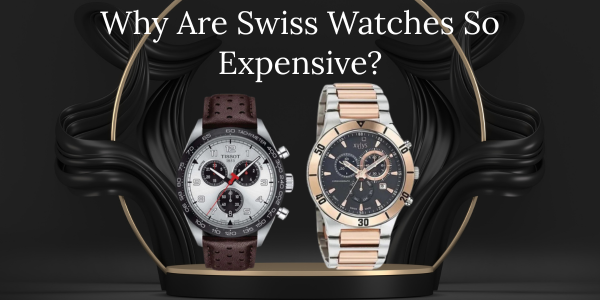Let’s be honest—when someone says “Swiss watch,” the first thing that comes to mind is luxury. Whether it’s a sleek Rolex, a classic Omega, or a refined Patek Philippe, Swiss watches don’t just tell time—they define time. But with prices ranging from tens of thousands to even millions, one question always ticks in the back of our minds:
Why are Swiss watches so expensive?
Is it just hype and heritage? Or is there something more under the dial?
In this article, we’re pulling back the velvet curtain to uncover what really goes into the price tag of a Swiss timepiece. And spoiler alert: It’s more than just a brand name.
⌚ 1. Centuries of Craftsmanship and Heritage
Switzerland didn’t wake up one day and decide to become the epicenter of horology. The Swiss watch industry dates back to the 16th century, and that means centuries of refining, innovating, and perfecting the art of watchmaking.
Brands like Vacheron Constantin, established in 1755, or Audemars Piguet, founded in 1875, have passed down their techniques through generations. You’re not just paying for a watch—you’re paying for a legacy of craftsmanship that’s been honed for over 200 years.
🔍 2. Meticulous Handcrafting Process
Unlike mass-produced watches that roll off an assembly line in minutes, Swiss watches are often assembled by hand—piece by tiny piece. A high-end mechanical watch may contain over 300 individual components, and every one of them needs to be polished, adjusted, and fitted with microscopic precision.
Watchmakers often spend months crafting a single timepiece. And it’s not just one person; entire teams focus on everything from movement calibration to hand-painting details on the dial.
That level of effort, attention, and human touch? It comes at a price—and rightly so.
⚙️ 3. Superior Mechanical Movements
Here’s where the real magic happens.
Most Swiss watches use either automatic or manual mechanical movements, unlike cheaper watches that rely on basic quartz mechanisms. These movements are complex systems of springs, gears, and rotors, engineered to keep time accurately—sometimes for decades—with zero electronics involved.
Movements like Rolex’s Caliber 3235 or Omega’s Co-Axial Master Chronometer are not only highly accurate, but they’re also tested rigorously under different conditions for durability and performance. Many are COSC-certified (Official Swiss Chronometer Testing Institute), which is a rare and prestigious label in watchmaking.
When you invest in a Swiss watch, you’re investing in a movement that is essentially a piece of kinetic art.
💎 4. High-Quality Materials
Another reason why Swiss watches command such premium pricing is the materials used. We’re not talking ordinary stainless steel or basic leather straps.
We’re talking:
-
Surgical-grade 316L or 904L stainless steel
-
Scratch-resistant sapphire crystal
-
18k gold or platinum cases
-
Hand-stitched alligator leather
-
Genuine diamonds and precious stones
Even the lume (glow-in-the-dark material) used on Swiss watches often comes from superior compounds like Super-LumiNova. These aren’t just watches—they’re luxury items crafted from the finest ingredients the world has to offer.
🧪 5. Rigorous Testing and Certification
Every Swiss-made watch undergoes stringent quality control. Brands often conduct water resistance tests, pressure checks, drop tests, and more. Many luxury watches are tested in real-world environments—from icy mountains to deep oceans.
Some brands go a step further with their own in-house certifications, such as:
-
Patek Philippe Seal
-
Rolex Superlative Chronometer
-
Omega METAS Certification
These aren’t marketing gimmicks—they’re a stamp of quality, and meeting these standards requires time, effort, and money.
🌍 6. Swiss Made = Global Prestige
The label “Swiss Made” is one of the most powerful and trusted markers in the luxury world. To qualify, at least 60% of manufacturing costs must be incurred in Switzerland, and the movement must be Swiss in origin.
Wearing a Swiss watch signals status, taste, and refinement. It’s not just a product—it’s a lifestyle statement. And let’s face it, prestige always comes at a price.
🛠️ 7. Limited Production and Exclusivity
Many Swiss brands deliberately limit production to keep their watches rare and exclusive. Think of brands like Richard Mille or Patek Philippe that produce far fewer units than the demand requires.
Limited supply + High demand = Higher prices.
In some cases, people wait years to get their hands on certain models, and resale values often skyrocket. A Swiss watch can sometimes be a better investment than gold.
💬 Final Thoughts
So, why are Swiss watches so expensive?
Because they’re more than watches.
They’re a blend of heritage, artistry, precision engineering, and status—brought to life through handcrafted mastery and cutting-edge innovation. Every time you glance at your wrist, you’re not just checking the time—you’re witnessing centuries of craftsmanship beating in perfect rhythm.
And that? That’s worth every rupee.







